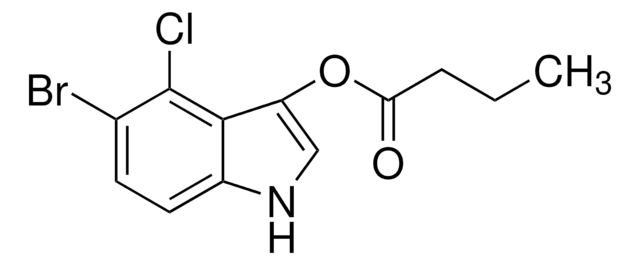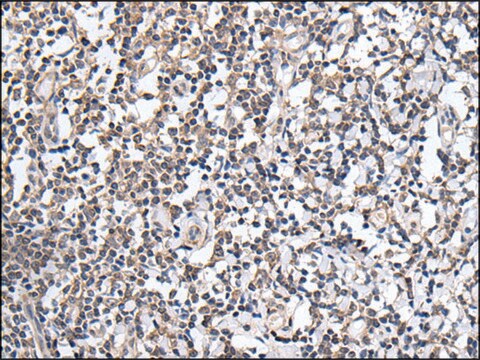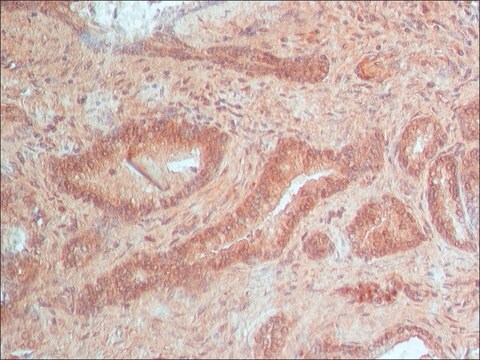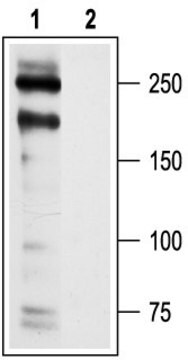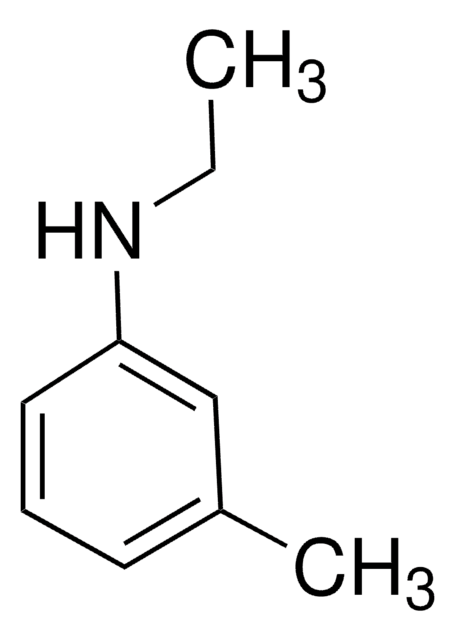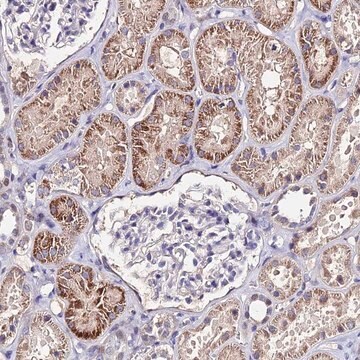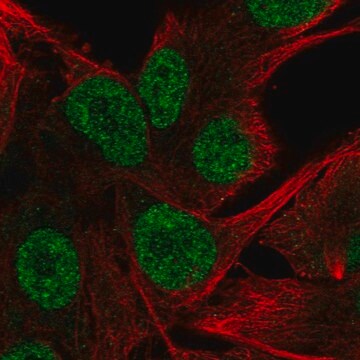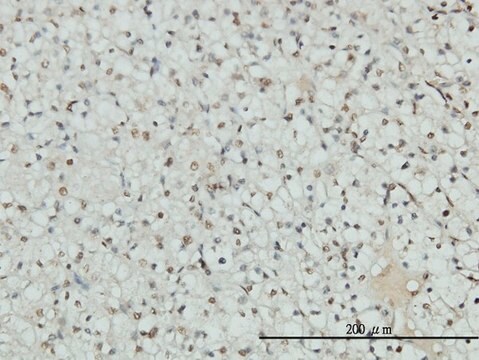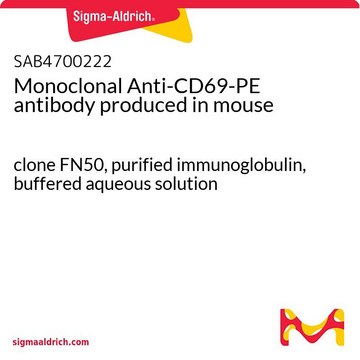MABF1495Z
Anti-NK1.1 (mouse) Antibody, clone PK136, Azide Free
clone PK136, from mouse
别名:
Killer cell lectin-like receptor subfamily B member 1B allele A, Killer cell lectin-like receptor subfamily B member 1C, CD161b, CD161c, CD161 antigen-like family member B, CD161 antigen-like family member C, Ly-55b, Ly-55c, Lymphocyte antigen 55b, Lymph
登录查看公司和协议定价
所有图片(1)
About This Item
分類程式碼代碼:
12352203
eCl@ss:
32160702
NACRES:
NA.43
推荐产品
生物源
mouse
品質等級
抗體表格
purified immunoglobulin
抗體產品種類
primary antibodies
無性繁殖
PK136, monoclonal
物種活性
mouse
技術
activity assay: suitable
flow cytometry: suitable
immunoprecipitation (IP): suitable
同型
IgG2aκ
GenBank登錄號
NCBI登錄號
目標翻譯後修改
unmodified
基因資訊
mouse ... Klrb1C(17059)
一般說明
The NK cell receptor protein 1 (NKR-P1), a.k.a. CD161, molecules represent a family of type II transmembrane C-type lectin-like receptors expressed predominantly by NK cells. A total of five murine NKR-P1-coding genes (Klrb1a/b/c/d/f) have been identified, with NKR-P1A/C/F (CD161a/c/f) functioning as stimulatory receptors that possess a charged transmembrane arginine esidue thought to be important for association with the FcRγ adaptor protein, and NKR-P1B/D as two inhibitory receptors that possess a consensus cytoplasmic ITIM (L/VxYxxL/I/V) motif. The ITIM motif is shown to mediate NKR-P1B recruitment of Src homology 2 (SH2)-containing protein tyrosine phosphatase-1 (SHP-1) in a phosphorylation-dependent manner. All murine NKR-P1 proteins possess a Cys-X-Cys-Pro (CxCP) motif that mediates association with the Src-related nonreceptor protein tyrosine kinase p56lck. Both NKR-P1B and NKR-P1C functionally associate with p56lck, while mutation of the CxCP motif abolishes NKR-P1B/C-mediated signal transduction. Likewise, mutation of ITIM motif abolishes NKR-P1B SHP-1 association as well as NKR-P1B-dependent inhibitory signaling.
特異性
Clone PK136 recognizes murine NKR-P1B/CD161b (UniProt P27812) and NK1.1/NKR-P1C/CD161c (UniProt P27814), but not CD161a/NKR-P1A (P27811). Upon activation by PK136 binding, NKR-P1C/NK1.1 signals to activate, while NKR-P1B signals to suppress, NK cells for cytotoxic killing of target cells (Carlyle, J.R., et al. (1999). J. Immunol. 162(10):5917-5923). Epitope is present in both spliced isoforms of murine NK1.1/CD161c reported by UniProt (P27814). Clone PK136 does not react with CD161a (by Klrb1a gene) or C57BL/6 mouse strain-derived CDC161b variant (by Klrb1b gene, also known as Klrb1d). There exists a fifth murine CD161 gene Klrb1f, reactivity of this mAb toward this gene product has not been established.
免疫原
Epitope: Extracellular domain.
Mouse spleen and bone marrow cells (Koo, G.C., and Peppard, J.R. (1984). Hybridoma. 3(3):301-303).
應用
Activity Assay: Representative lots, when administered to mice via i.p. injection, depleted splenic natural killer (NK) cell activity in a dose-dependent manner (Xiao, T.Z., et al. (2012). Biol. Blood Marrow Transplant. 18(2):200-209; Seaman, W.E., et al. (1987). J. Immunol. 138(12):4539-4544).
Activity Assay: A representative lot activated target cell killing by cross-linking NK cell surface NK1.1 (NKR-P1C) and target cell surface Fc receptor. Ab-induced redirected lysis (AIRL) assay employing NK cells expressing both NKR-P1B and NKR-P1C prevented NK cell cytotoxicity activation by clone PK136 (Carlyle, J.R., et al. (1999). J. Immunol. 162(10):5917-5923).
Immunoprecipitation Analysis: A representative lot co-immunoprecipitated SHP-1, but not SHP-2 or SHIP, from Swiss NIH mouse-derived MNK-1 pre-NK cells upon upregulating NKR-P1B intracellular ITIM motif tyrosine phosphorylation by pervanadate treatment (Carlyle, J.R., et al. (1999). J. Immunol. 162(10):5917-5923).
Flow Cytometry Analysis: A representative lot immunostained the surface of Jurkat transfectants expressing C57BL/6J (B6) mouse-derived NKR-P1B/CD161b or Swiss NIH (Sw) mouse-derived NKR-P1C/CD161c/NK1.1, but not Jurkat transfectants expressing B6-derived NKR-P1A/CD161a (Carlyle, J.R., et al. (1999). J. Immunol. 162(10):5917-5923).
Flow Cytometry Analysis: A representative lot immunostained NKR-P1B/CD161b-expressing NK cells from Swiss NIH (Sw) mouse strain, NKR-P1C/CD161c/NK1.1-expressing NK cells from C57BL/6J (B6), as well as (B6 3 Sw)F1 cross-strain-derived NK cells expressing both NKR-P1B and NKR-P1C (Carlyle, J.R., et al. (1999). J. Immunol. 162(10):5917-5923).
Note: Clone PK136 is also available in the following conjugated forms for flow cytometry application, APC (MABF1487 & MABF1488), FITC (MABF1489 & MABF1490), PE (MABF1491), PerCP-Cy5.5 (MABF1493 & MABF1494). redFluor® 710 (MABF1496 & MABF1497).
Activity Assay: A representative lot activated target cell killing by cross-linking NK cell surface NK1.1 (NKR-P1C) and target cell surface Fc receptor. Ab-induced redirected lysis (AIRL) assay employing NK cells expressing both NKR-P1B and NKR-P1C prevented NK cell cytotoxicity activation by clone PK136 (Carlyle, J.R., et al. (1999). J. Immunol. 162(10):5917-5923).
Immunoprecipitation Analysis: A representative lot co-immunoprecipitated SHP-1, but not SHP-2 or SHIP, from Swiss NIH mouse-derived MNK-1 pre-NK cells upon upregulating NKR-P1B intracellular ITIM motif tyrosine phosphorylation by pervanadate treatment (Carlyle, J.R., et al. (1999). J. Immunol. 162(10):5917-5923).
Flow Cytometry Analysis: A representative lot immunostained the surface of Jurkat transfectants expressing C57BL/6J (B6) mouse-derived NKR-P1B/CD161b or Swiss NIH (Sw) mouse-derived NKR-P1C/CD161c/NK1.1, but not Jurkat transfectants expressing B6-derived NKR-P1A/CD161a (Carlyle, J.R., et al. (1999). J. Immunol. 162(10):5917-5923).
Flow Cytometry Analysis: A representative lot immunostained NKR-P1B/CD161b-expressing NK cells from Swiss NIH (Sw) mouse strain, NKR-P1C/CD161c/NK1.1-expressing NK cells from C57BL/6J (B6), as well as (B6 3 Sw)F1 cross-strain-derived NK cells expressing both NKR-P1B and NKR-P1C (Carlyle, J.R., et al. (1999). J. Immunol. 162(10):5917-5923).
Note: Clone PK136 is also available in the following conjugated forms for flow cytometry application, APC (MABF1487 & MABF1488), FITC (MABF1489 & MABF1490), PE (MABF1491), PerCP-Cy5.5 (MABF1493 & MABF1494). redFluor® 710 (MABF1496 & MABF1497).
Anti-NK1.1 (mouse) Antibody, clone PK136, Azide Free is an antibody against NK1.1 (mouse) for use in Flow Cytometry, Activity Assay, Immunohistochemistry, Immunoprecipitation.
Research Category
Inflammation & Immunology
Inflammation & Immunology
Research Sub Category
Immunological Signaling
Immunological Signaling
品質
Evaluated by Flow Cytometry in mouse splenocytes.
Flow Cytometry Analysis: 1.0 µg of this antibody detected NK1.1-positive mouse splenocytes.
Flow Cytometry Analysis: 1.0 µg of this antibody detected NK1.1-positive mouse splenocytes.
標靶描述
25.08 kDa (NK1.1/CD161c isoform 1) and 24.77 kDa (NK1.1/CD161c isoform 2) calculated.
外觀
Protein G purified.
Format: Purified
Purified mouse monoclonal IgG2aκ antibody in PBS without preservatives.
儲存和穩定性
Stable for 1 year at -20°C from date of receipt.
Handling Recommendations: Upon receipt and prior to removing the cap, centrifuge the vial and gently mix the solution. Aliquot into microcentrifuge tubes and store at -20°C. Avoid repeated freeze/thaw cycles, which may damage IgG and affect product performance.
Handling Recommendations: Upon receipt and prior to removing the cap, centrifuge the vial and gently mix the solution. Aliquot into microcentrifuge tubes and store at -20°C. Avoid repeated freeze/thaw cycles, which may damage IgG and affect product performance.
其他說明
Concentration: Please refer to lot specific datasheet.
法律資訊
GenBank is a registered trademark of United States Department of Health and Human Services
redFluor is a registered trademark of Tonbo Biotechnologies
免責聲明
Unless otherwise stated in our catalog or other company documentation accompanying the product(s), our products are intended for research use only and are not to be used for any other purpose, which includes but is not limited to, unauthorized commercial uses, in vitro diagnostic uses, ex vivo or in vivo therapeutic uses or any type of consumption or application to humans or animals.
未找到合适的产品?
试试我们的产品选型工具.
儲存類別代碼
12 - Non Combustible Liquids
水污染物質分類(WGK)
WGK 2
閃點(°F)
Not applicable
閃點(°C)
Not applicable
Yao Huang et al.
Molecular oncology, 14(3), 657-668 (2020-01-04)
Oncolytic viruses armed with therapeutic transgenes of interest show great potential in cancer immunotherapy. Here, a novel oncolytic adenovirus carrying a signal regulatory protein-α (SIRPα)-IgG1 Fc fusion gene (termed SG635-SF) was constructed, which could block the CD47 'don't eat me' signal
Jan P Böttcher et al.
Cell, 172(5), 1022-1037 (2018-02-13)
Conventional type 1 dendritic cells (cDC1) are critical for antitumor immunity, and their abundance within tumors is associated with immune-mediated rejection and the success of immunotherapy. Here, we show that cDC1 accumulation in mouse tumors often depends on natural killer
Philipp A Ilinykh et al.
Cell host & microbe, 27(6), 976-991 (2020-04-23)
Marburg virus (MARV) and Ebola virus (EBOV) belong to the family Filoviridae. MARV causes severe disease in humans with high fatality. We previously isolated a large panel of monoclonal antibodies (mAbs) from B cells of a human survivor with previous
我们的科学家团队拥有各种研究领域经验,包括生命科学、材料科学、化学合成、色谱、分析及许多其他领域.
联系技术服务部门